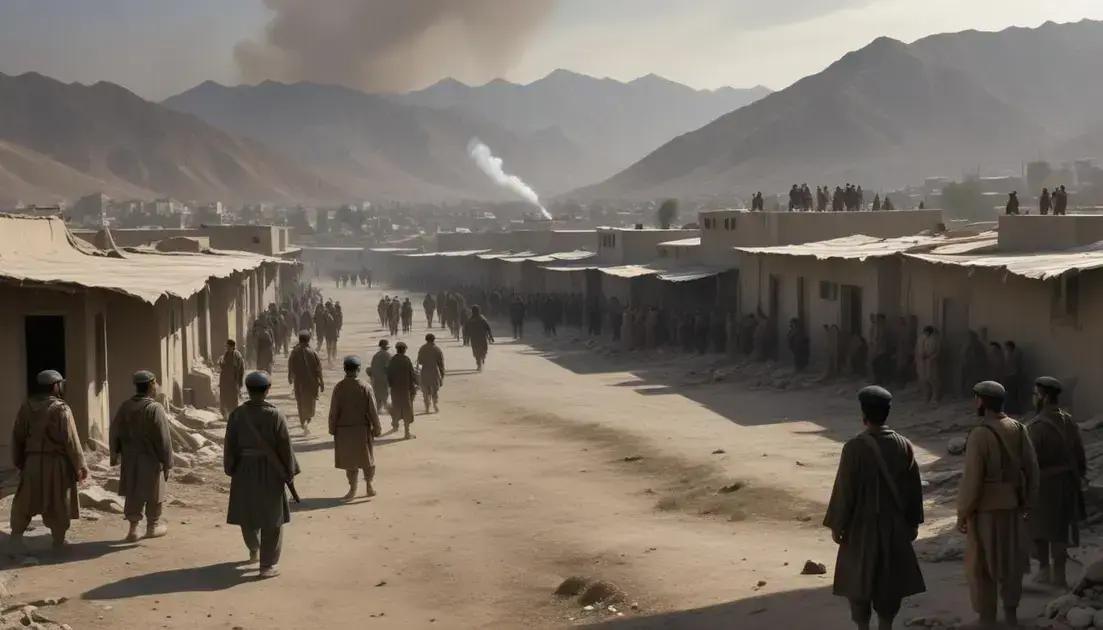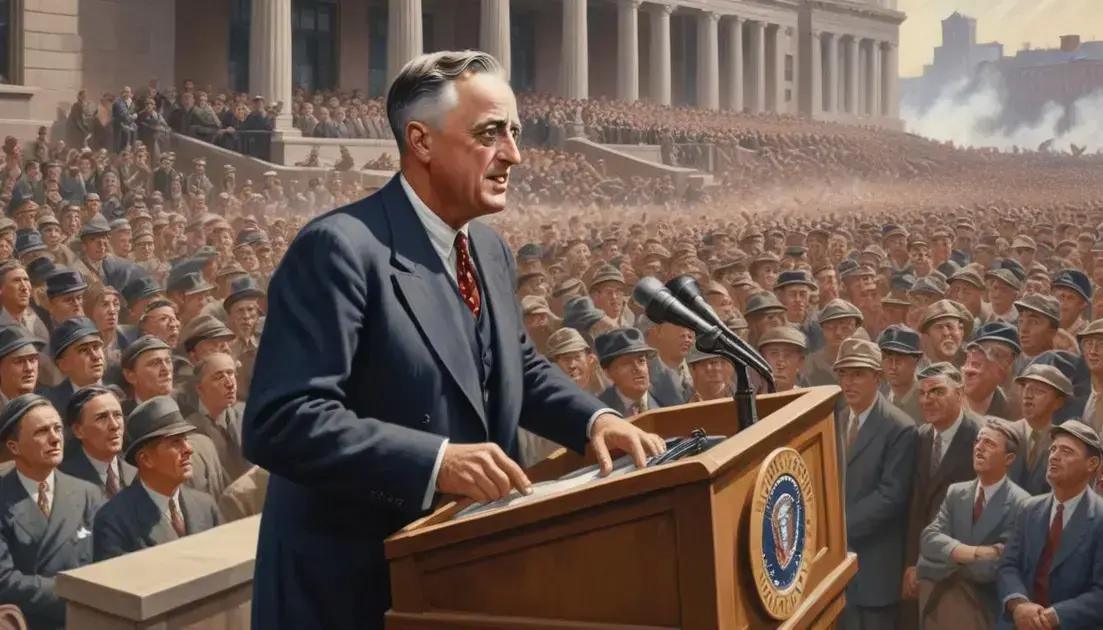
Fall of Kabul: The End of America’s Longest War
The U.S. withdrawal from Afghanistan has led to significant changes, including the Taliban’s rapid rise to power and subsequent humanitarian crises. As the international community reacts, concerns about human rights, especially for women, and economic stability deepen. Many Afghans face challenges, including displacement and limited access to basic needs. The future of Afghanistan now hinges on local governance and global diplomatic relations, raising questions about stability and support for the Afghan people.
The **Kabul** crisis represents a crucial moment in history, as the U.S. marks the end of its longest war. What does this mean for the world?
The U.S. withdrawal from Afghanistan
The U.S. withdrawal from Afghanistan marked a turning point in many lives. After nearly two decades of military presence, Americans began to leave.
What Led to the Withdrawal?
There were several reasons for this decision. Changing political views at home, combined with the desire to end a long conflict, pushed leaders to act. Many believed it was time for Afghans to take charge of their own future.
How Did the Withdrawal Happen?
The process took months. Troops were pulled out gradually as part of a planned strategy. However, the speed of the Taliban’s advance was surprising.
The Reaction to the Withdrawal
People around the world had mixed feelings. Some supported the decision, while others worried about the consequences. Many Afghans were fearful of what would come next.
The Impact on Afghan Society
The withdrawal left a significant mark. With the return of the Taliban, many faced uncertainty. Rights, especially those of women, became a major concern. Families had to adapt quickly to this new reality.
As the U.S. officially ended its involvement, questions arose about the future of Afghanistan. The world watched closely, hoping for peace and stability.
The Taliban’s rapid rise to power
The Taliban’s rapid rise to power shocked many. As the U.S. withdrew, they gained control quickly. Many wondered how this happened.
Factors Behind Their Rise
The Taliban had been planning for years. They used the chaos of the withdrawal to their advantage. Local support helped them gain ground fast.
Key Events in Their Takeover
One major event was the fall of key cities. They took control of Kabul with little resistance. This swift action caught everyone off guard.
The Role of Afghan Forces
The Afghan forces faced challenges. Many soldiers struggled to stay loyal amidst uncertainties. Some chose to surrender rather than fight.
International Reactions
Countries reacted in different ways. Some were shocked and called for action. Others were more cautious, worried about what this meant for the region.
As the Taliban took over, concerns grew about human rights. The world watched closely, fearing for the future of Afghanistan.
Humanitarian consequences
The humanitarian consequences of the Taliban’s takeover are severe. Many Afghans face hardship as the country changes rapidly.
Immediate Impact on Civilians
As the Taliban took control, civilians found themselves in danger. Access to basic needs like food and water became harder.
Displacement and Refugees
Many people fled their homes to escape violence. Thousands sought safety in neighboring countries. Refugees face challenges in finding shelter and support.
Women’s Rights Under Threat
Women, in particular, face significant risks. The Taliban’s past rules restrict women’s freedoms and rights. Many women fear for their safety and future.
International Aid and Assistance
Global organizations struggle to provide help. Aid workers find it difficult to operate safely. Many depend on aid and face uncertainty about the future.
The world watches as these humanitarian issues unfold. Concerns grow about long-term stability and the lives affected.
Global reactions to the U.S. withdrawal
The global reactions to the U.S. withdrawal from Afghanistan were loud and varied. Leaders around the world expressed their feelings about the situation.
Supporters of the Withdrawal
Some countries supported the U.S. decision. They believed it was time to end a long conflict. These countries hoped for peace in Afghanistan.
Critics of the Withdrawal
Others harshly criticized the move. They worried it would lead to chaos and suffering. Concerns about human rights violations grew significantly.
Regional Concerns
Neighbors of Afghanistan, like Pakistan and Iran, felt acute worries. They feared instability could spill over into their countries. Security became a pressing issue for them.
Humanitarian Responses
Many global organizations called for help for Afghans. They urged countries to take action and provide support. The focus was on safety for those at risk.
As reactions poured in, the world waited to see the impact of the withdrawal. Leaders faced tough decisions on how to respond.
The future of Afghanistan post-U.S. presence
The future of Afghanistan after the U.S. withdrawal looks uncertain. Many questions remain about what comes next for the country.
Political Landscape
The Taliban now controls the government. They must prove they can lead effectively. How they manage challenges will impact Afghanistan’s stability.
Economic Challenges
Afghanistan faces severe economic struggles. The lack of international support can worsen the situation. People need jobs and basic goods, but many fear their futures.
Human Rights Concerns
Human rights, especially for women, are under threat. The previous gains in women’s rights could vanish. The world is watching closely to see how this unfolds.
International Relations
Other countries will play a role. Some might engage with the Taliban, while others may isolate them. The choice of allies will affect Afghanistan’s future.
As time passes, the country’s direction becomes clearer. The hope is for peace and stability, but many challenges lie ahead.
Conclusion
In conclusion, the situation in Afghanistan is complex and evolving. The U.S. withdrawal marks a significant change, affecting many lives. The Taliban’s return to power brings uncertainty about human rights and political stability.
Many Afghans face serious challenges ahead, especially women and marginalized groups. The international community must keep a close eye on these developments. Support for humanitarian aid is crucial.
Looking to the future, peace and stability in Afghanistan will depend on local leadership and global response. Everyone hopes for a better tomorrow for the Afghan people, despite the many hurdles they face. Let’s remember that their story is still being written, and we all have a part to play in it.


